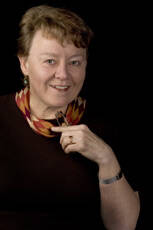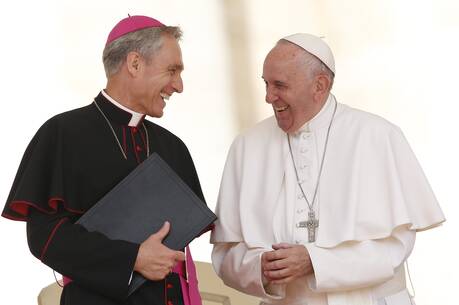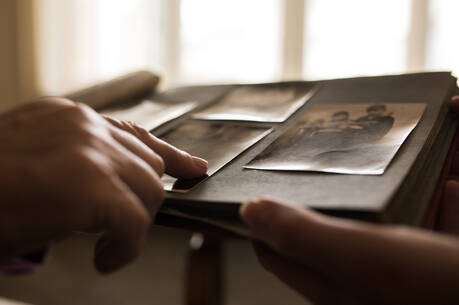In a recent issue of The Art Newspaper, I read that Belgravia Gallery in London is about to start selling once again its signed, limited-edition lithographs by Nelson Mandela to mark the artist’s 90th birthday on July 18. Readers may recall that in 2001 Mandela became a fledgling artist at the age of 83, when he produced a set of handprints (his own) followed by two sets of charcoal and pastel drawings. Over three months, with the help of a tutor and professional artists to print and process the work, Mandela made his images into lithographs and signed each one. The purpose was to raise money for charity—all proceeds to go to the Nelson Mandela Trust.
A festive exhibition opening and auction took place on Robben Island, off Cape Town, at the prison where Mr. Mandela spent 18 of his 27 years in captivity. The prison is the subject of his art. At the auction, two British businessmen made purchases totaling $200,000 each. Later Oprah Winfrey, Bill Clinton, Prince Charles and David Beckham, among others, also bought prints. But the sweet plan to help the needy soon soured. In 2005 Mandela filed a suit against Ismail Ayob, his longtime friend and former personal lawyer, the man who had suggested the art project initially and was entrusted with managing it. The lawsuit alleges that Ayob forged Mandela’s name on countless lithographs that sold for up to £15,000 apiece, and that at least £2.6 million (over $5 million) from such sales should be returned to the Nelson Mandela Trust. The suit has not yet been resolved.
Meanwhile, the statesman’s minimalist pictures—of his cell, the guard tower, the hospital ward, the courtyard and more—with accompanying “motivations” (handwritten comments about each image) have been shown and sold throughout the world. They can all be viewed online (http://www.kizo.co.za/product_listing.php?id=71) and deserve to be seen and pondered. Yet while Nelson Mandela has tried to halt the exploitation of his name and the sale of his art until the fakes can be sorted out, getting control of intellectual property is a hard battle to win.
The Belgravia Gallery, which stopped selling its lithographs by Mandela three years ago, secured the services of a forgery expert to defend the authenticity of its holdings. Not surprisingly, the expert has assured the gallery that its holdings are genuine. Now the gallery will resume its marketing.
What I find unsettling about the scandal is the distorted image it paints of Nelson Mandela. A victorious freedom fighter; a moral giant who overturned apartheid, brought democracy to South Africa and was elected at age 75 to lead that nation; a Noble Peace Prize winner and devoted philanthropist—this noble man appears tied down by midgets, a Gulliver at the hands of the Lilliputians. Or perhaps a King Lear, reduced in old age by the treachery of those closest to him. What else can he do? A forger could, it seems, exploit Mandela’s hard-won reputation and leech off his handiwork for years to come.
Focus, though, on the real portrait of the artist—that still holds me rapt. Anna Hunter of the Belgravia Gallery said Mandela told her “he would much prefer to be an artist, rather than a book writer.” That gave me pause. The statement gained credibility when I pieced it together with a New York Times account of Mandela’s own speech at the exhibition opening on Robben Island: Mandela “talked about his lifelong romance with color…about growing up as a shepherd boy in the green fields of the rural Eastern Cape province. He reminisced about the gleaming stars, the silvery moon and the shimmering rainbows.” After 27 years of life behind bars—which cast a gray scrim over everything—color burst into Mandela’s field of vision and lit up his world once more. Art can be play. It can transport one, bring back youth, inflame the human spirit. Mandela found the artist within himself.
“Robben Island was once a place of darkness,” writes Mandela in one of his motivations, “but out of that darkness has come…a light so powerful that it could not be hidden behind prison walls…. I have attempted to colour the island sketches in ways that reflect the positive light in which I view it.” The artist wants to convey “that even the most fantastic dreams can be achieved if we are prepared to endure life’s challenges.” Here’s a mark made by Mandela that no one can forge: Robben Island prison is closed. In Dec. 1999, it became South Africa’s first World Heritage Site. Happy Birthday, Mr. President.








